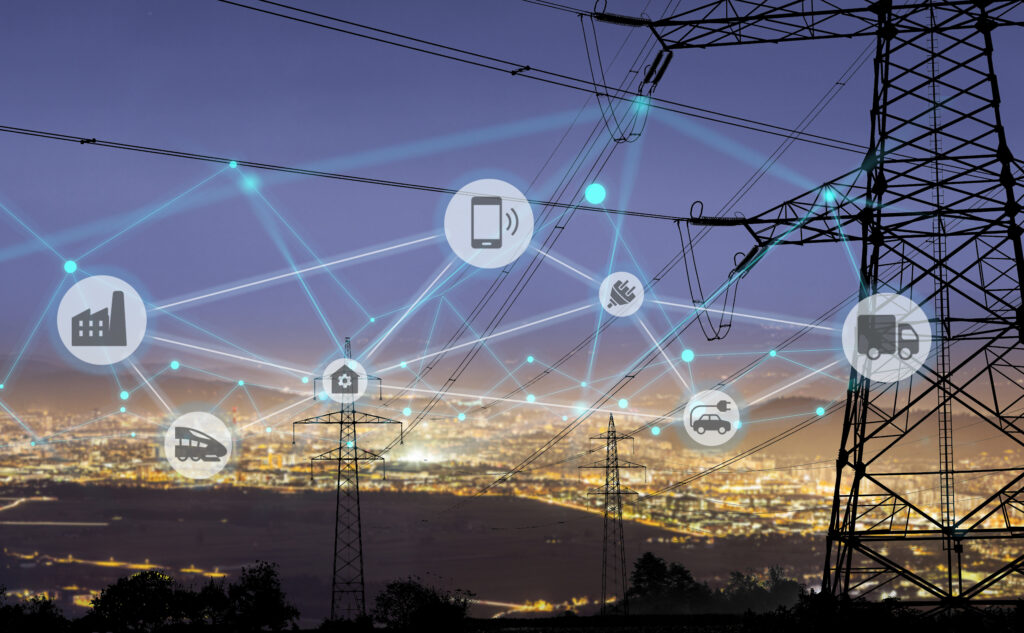We have entered the era of Big Data. The volume of data exchanged around the world has increased by 569% between 2016 and 2018, and the trend is upward. This quantitative explosion of digital data is forcing us to review our orders of magnitude, the way we capture, analyze, store and present this data. It also represents a major environmental threat: creating, storing, processing and transporting this data requires huge amounts of energy and resources. “According to estimates, new technologies alone account for 6 to 10% of the world’s electrical consumption, and thus nearly 4% of greenhouse gas emissions,” points out digital ecologist and research engineer Françoise Berthoud. “This is a fast-growing trend, with annual increases of 5 to 7%.”
To better understand the energy impact of big data and how companies can take this into account, Pre-Master students of the ESCP Master in Management programme – Roméo Bricout-Soto, Margaux Cantenot, Alice Crépin, Maxence Cuchet, Marin Czarnecki and Léo Enderlin – conducted a research study for the seminar “Designing Tomorrow – Business and Sustainability”. This is a summary of their research, which earned them the first Designing Tomorrow Prize of the Deloitte Chair in Circular Economy and Sustainable Business Models.
Data consumes resources both because of its hardware and its use.
The manufacturing of devices such as smartphones and computers represents a very significant environmental cost. It is estimated that the manufacture and transport of a 2-kilogram computer uses 800 kilos of raw materials and releases 124 kilos of CO2 into the atmosphere. In addition, all electronic devices are composed of rare metals. The extraction of these rare metals requires the use of highly-polluting radioactive substances. For example, the Mountain Pass mine was closed in 1998 after thousands of liters of radioactive water were released into the environment. To summarize the situation and to quote Françoise Berthoud, “more energy is used to extract these metals and manufacture the components than during the entire life of the product afterwards.”
A distinction can be made between user and supplier environmental impacts in the use of data.
The user impact is related to the number of consumers and the change in their habits. Today, it is accentuated by the widespread use of digital technology, with growing electricity consumption by individuals linked to the use of electronic devices. In 2016, France’s national electricity transmission system operator (RTE) estimated that the electricity consumption of terminal devices in homes (computers and audiovisual equipment) represents 22 TWh/year.
In addition, the democratization of Internet access – more than 60% of the world’s population uses the Internet – goes hand in hand with the spread of services based on online storage through streaming offers such as Netflix, the billion emails sent every hour, or the expansion of cloud storage solutions.
The supplier impact, on the other hand, is linked to business strategies and the technological requirements related to the deployment of the services they offer.
Today, data transmission and storage represent the most important challenge in limiting Big Data’s energy impact.
Data transmission is becoming increasingly costly for the environment, as users demand faster exchanges and heavier data loads (increased video quality or encryption, for example). The increase in transfer speed, however, goes hand in hand with the increase in energy consumption. It is estimated that 4G consumes 23 times more energy than Wi-Fi connections and even more, compared to 3G.
Cloud services rely on more than 200 data centers. The related power consumption is estimated at 3 TWh/year for each of them. This huge energy consumption is due to the fact that most of our electronic devices are running 24 hours a day, 365 days a year. They, therefore, require data to be available at all times. Data centers are in constant operation and the power supply for the servers and cooling systems consumes electricity. In addition, it is estimated that the energy used in data centers is highly polluting, as a majority of it is produced by coal and gas.
Companies have become aware of these limitations and are implementing strategies to reduce their energy consumption to benefit the environment and their operating costs.
There are two strategies: offsetting and reducing the energy footprint.
Adopted by Amazon Web Services, the first consists of offsetting the carbon emissions of the activity, by planting trees for example.
Since the cleanest energy is the energy you don’t consume, the second strategy addresses the root cause of the problem by reducing energy consumption. Celeste is an operator of new-generation data centers, which are very energy-efficient by market standards. Using natural air circulation to limit the use of air conditioning, the “Marylin” data center developed by this French business uses energy-efficient cooling methods. This technology reduces by 35% server energy consumption, which represents the main item in operating costs and, in some cases, more than 50% of the energy footprint…
While innovation and corporate responsibility seem to be moving in the right direction, changes are not fast enough to cope with the exponential increase in data flows, and therefore the amount of energy consumed.
It seems both necessary and urgent that the responsibility should not only lie with a few digital companies, but with society as a whole regarding its use of digital technology. We, as consumers, must adopt a more reasoned and conscious use of the resources on the Internet. Societies must include environmental sustainability in their global strategies, and States must establish a framework conducive to this change. This will require the implementation of smart cities and even automated regulatory control through smart laws. Finally, in the long term, data must serve the environment rather than serve itself in its resources.
Feature photo credit: urbans78 – stock.adobe.com.
